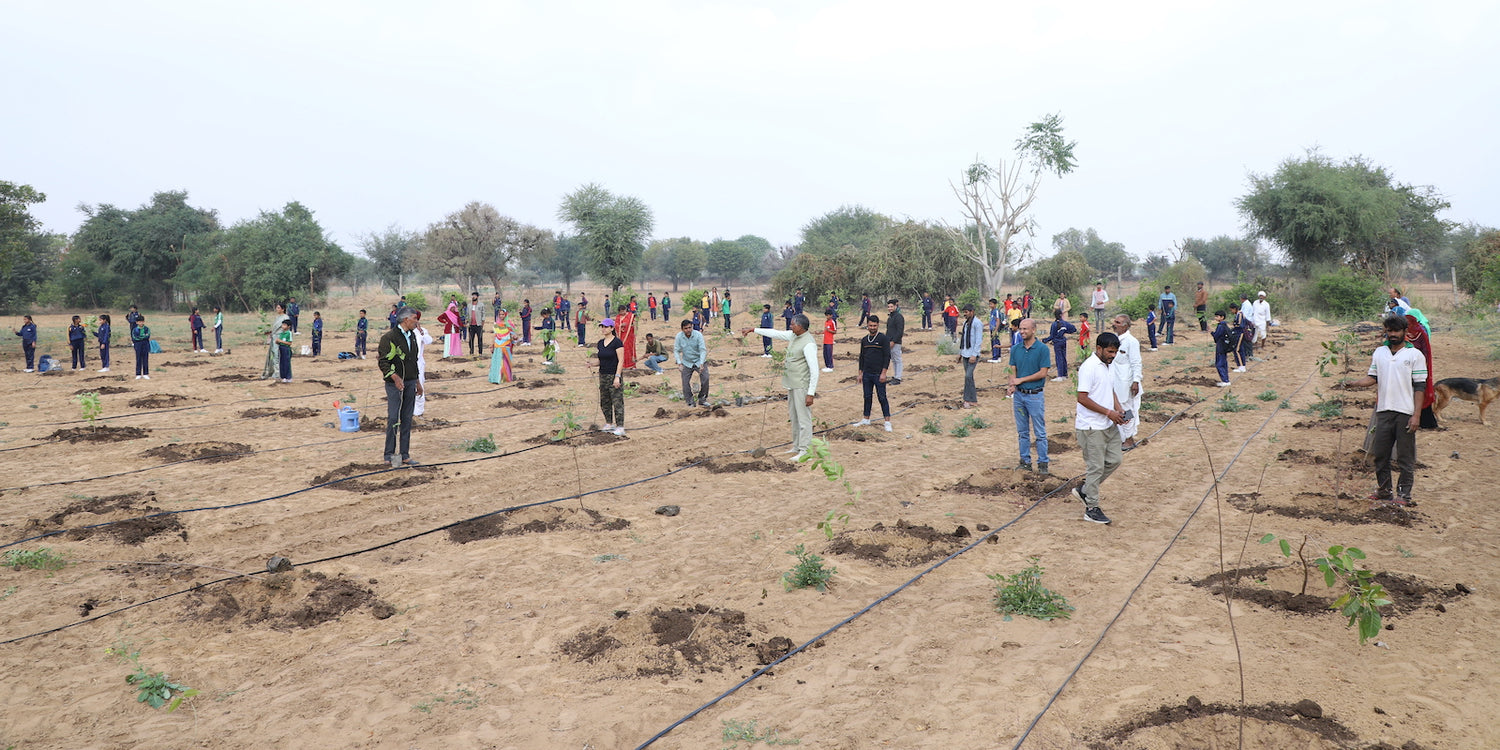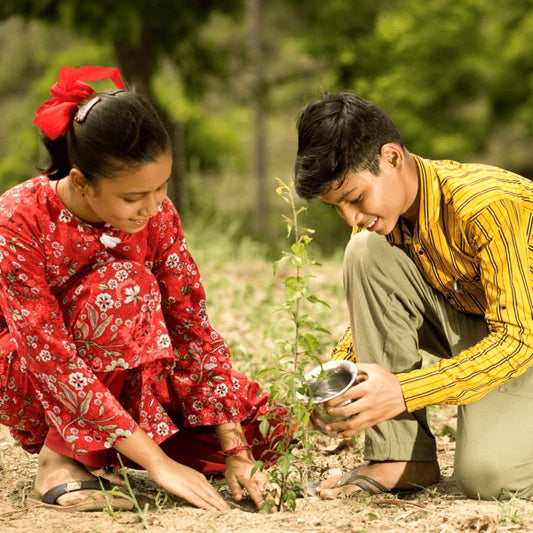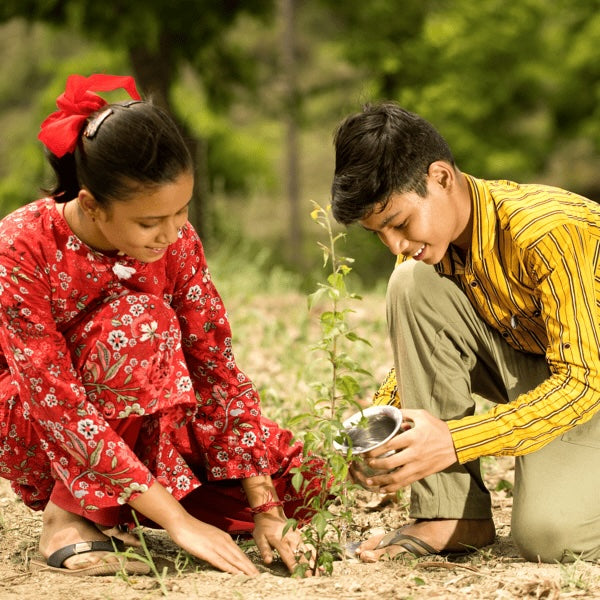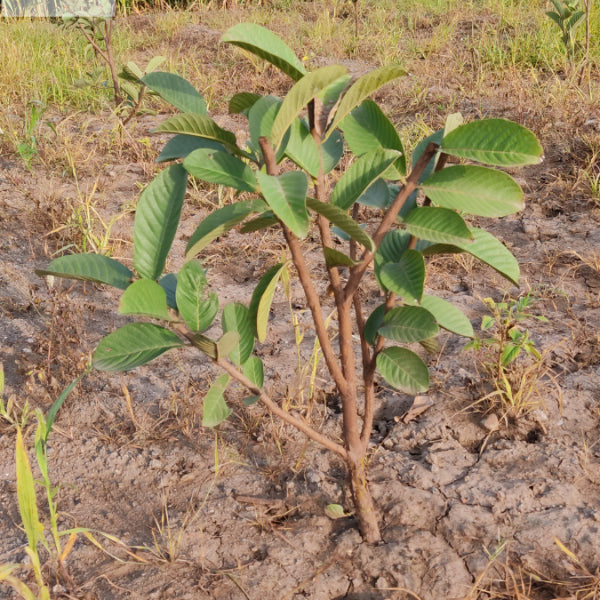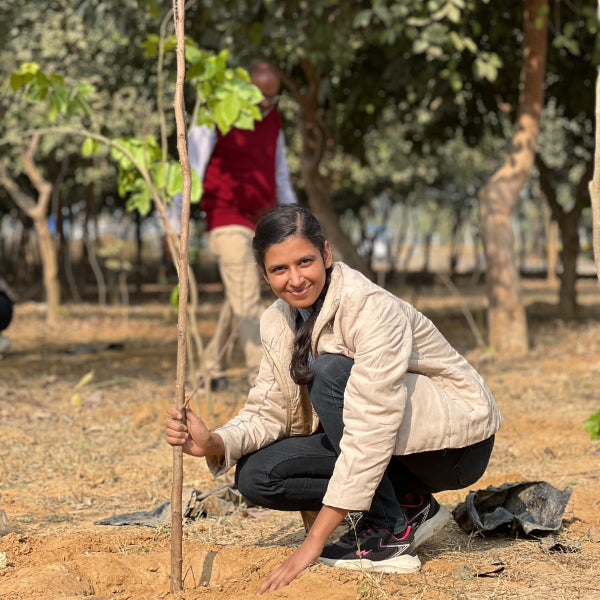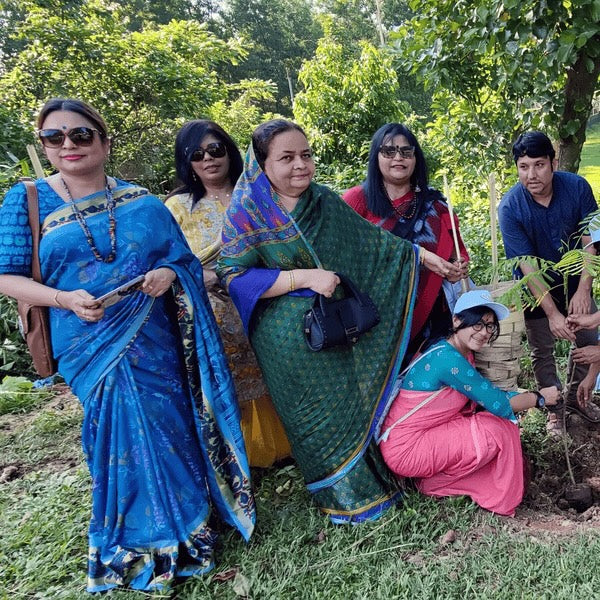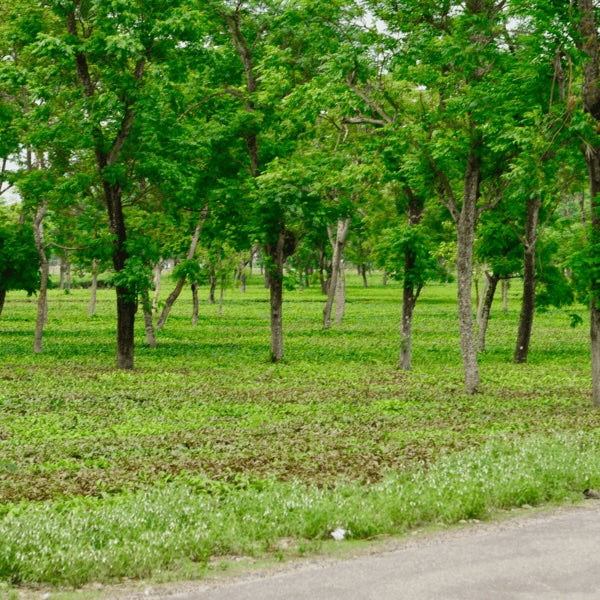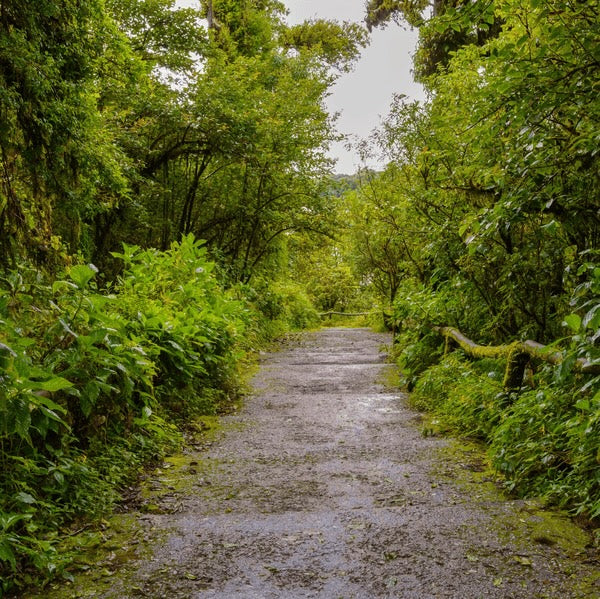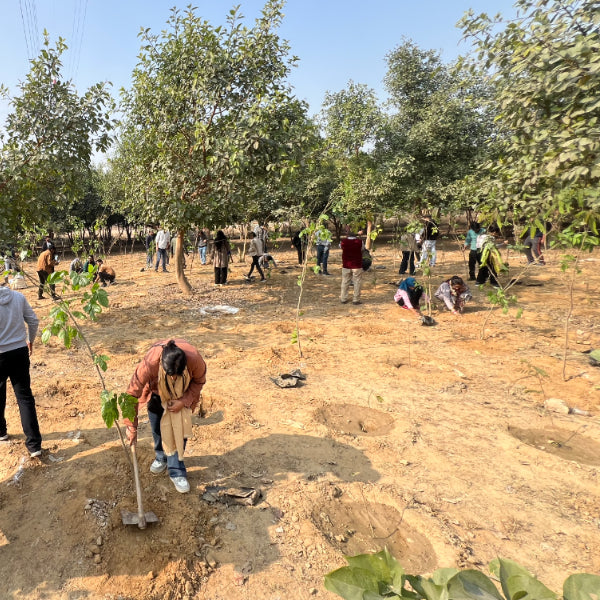Agroforestry in Punjab: Enhancing Soil Health and Income
Agroforestry is a sustainable land-use system that integrates trees and shrubs into agricultural landscapes. In Punjab, this practice is gaining momen Read more
Connect with us
-
👥 Corporates
If you are looking for:
- 🌲 Tree Plantation Events
- 📊 CSR Projects
📧 corporate@growbilliontrees.com
📞 +91 9699723523
💬 +91 9325931304 WhatsApp (Only)
🕒 Mon - Sat | 10am - 7pm IST
-
🧩 Tree Plantation NGOs
If you are looking for:
- 💰 Financial Assistance
- 🤝 Operational Support
📧 support@growbilliontrees.com
📞 +91 9699723523
💬 +91 9325931304 WhatsApp (Only)
🕒 Mon - Sat | 10am - 7pm IST
-
🌼 Individuals
If you are looking for:
- 👥 Group Tree Plantation Drive
- 🌳 Bulk Tree Plantation
📞 +91 9699723523
💬 +91 9325931304 WhatsApp (Only)
🕒 Mon - Sat | 10am - 7pm IST
Trending
Trees for Corporates
Agroforestry in Punjab: Enhancing Soil Health and Income
Agroforestry is a sustainable land-use system that integrates trees and shrubs into agricultural landscapes. In Punjab, this practice is gaining momentum, enhancing soil health and boosting farmers' incomes. 🌳
Punjab, known as the "Granary of India," has a rich agricultural heritage. However, intensive farming has led to soil degradation, reduced fertility, and water scarcity. Agroforestry offers a solution to these pressing issues. 🌾
By planting trees alongside crops, farmers can improve soil structure and fertility. Trees enhance nutrient cycling, reduce erosion, and increase organic matter in the soil. Studies show that agroforestry systems can increase soil organic carbon by up to 30%. 📈
Moreover, trees provide shade and shelter for crops, reducing heat stress and improving yields. For instance, intercropping with trees can increase maize yields by 20-30%. This is crucial in Punjab, where climate change poses a significant threat to agriculture. ☀️
Agroforestry also diversifies income sources for farmers. By growing fruit trees, timber, and medicinal plants alongside traditional crops, farmers can tap into new markets. This diversification can increase farm income by 50% or more! 💰
Fun fact: The Punjab Agricultural University has been researching agroforestry systems since the 1980s, demonstrating their potential to enhance productivity and sustainability. 📚
Historically, Punjab's farmers relied heavily on monoculture practices, primarily wheat and rice. This led to soil depletion and increased vulnerability to pests and diseases. Agroforestry breaks this cycle, promoting biodiversity and resilience. 🌼
Environmental impacts of agroforestry are profound. Trees sequester carbon, helping mitigate climate change. A single mature tree can absorb about 48 pounds of CO2 annually. In Punjab, widespread adoption of agroforestry could significantly reduce the region's carbon footprint. 🌍
Additionally, agroforestry systems improve water retention in the soil, reducing the need for irrigation. This is particularly important in Punjab, where groundwater levels are declining rapidly. 🌊
Organizations like Grow Billion Trees are at the forefront of promoting agroforestry across India. Their mission is to plant billions of trees, enhancing ecosystems and livelihoods. 🌱
Grow Billion Trees is executing projects that educate farmers about agroforestry benefits. They provide training on tree selection, planting techniques, and maintenance. This empowers farmers to make informed decisions. 🧑🌾
Through community engagement, Grow Billion Trees fosters a sense of ownership among farmers. This grassroots approach ensures the sustainability of agroforestry practices. 🤝
In Punjab, Grow Billion Trees collaborates with local NGOs to implement agroforestry projects. They focus on planting native species that thrive in the region's climate, ensuring higher survival rates. 🌿
Moreover, the organization conducts workshops to raise awareness about the economic benefits of agroforestry. Farmers learn how to market their products, from fruits to timber, increasing their income potential. 📈
In addition to economic benefits, agroforestry enhances community resilience. By diversifying crops and income sources, farmers are better equipped to face market fluctuations and climate challenges. 🌦️
Agroforestry also plays a crucial role in preserving Punjab's rich biodiversity. By planting a variety of species, farmers can create habitats for wildlife, promoting ecological balance. 🦋
As Punjab embraces agroforestry, the potential for positive change is immense. Farmers can restore soil health, increase yields, and secure their livelihoods. This is not just a farming practice; it's a movement towards sustainability. 🌍
In conclusion, agroforestry in Punjab is a beacon of hope for farmers facing environmental and economic challenges. With the support of initiatives like Grow Billion Trees, the future looks bright. Together, we can cultivate a greener, more sustainable Punjab! 🌱
Join the movement! Explore agroforestry and discover how you can contribute to a healthier planet and a prosperous farming community. 🌳
Agroforestry Practices in Punjab
In the lush fields of Punjab, agroforestry practices are like the cool kids at school—everyone wants to be friends with them. By integrating trees with crops, farmers are not just growing food; they’re cultivating a symphony of biodiversity. Imagine a farmer harvesting wheat while a mango tree stands proudly nearby, offering shade and a sweet snack. This practice not only enhances soil health but also boosts income by diversifying produce. It’s like having a buffet instead of a single dish. So, if you’re in Punjab, don’t just plant crops; throw in some trees and watch your farm transform into a thriving ecosystem.
Soil Health Improvement Techniques
Soil health in Punjab is akin to a well-kept secret—once you unlock it, the rewards are bountiful. Techniques like cover cropping and mulching are the unsung heroes of soil rejuvenation. They’re like the spa day your soil never knew it needed. By preventing erosion and enhancing nutrient content, these techniques ensure that the soil remains fertile and productive. Farmers who embrace these methods often find their yields soaring higher than a kite on a windy day. So, if you want your soil to be the talk of the town, it’s time to pamper it with some health-improving techniques.
Economic Benefits of Agroforestry
Let’s talk money—because who doesn’t love a good financial boost? Agroforestry in Punjab is not just about trees and crops; it’s about fattening wallets too. By diversifying income sources, farmers can weather the storm of market fluctuations. Imagine selling fruits, nuts, and timber alongside traditional crops. It’s like having multiple streams of income flowing into your bank account. Plus, agroforestry can reduce costs associated with fertilizers and pesticides, making it a win-win situation. So, if you’re looking to beef up your bank balance, agroforestry might just be your golden ticket.
Biodiversity in Agroforestry
Biodiversity is the spice of life, and in Punjab’s agroforestry systems, it’s the secret ingredient that makes everything better. By planting a variety of species, farmers create a mini-ecosystem that attracts beneficial insects and wildlife. It’s like hosting a party where everyone is invited—bees, birds, and even the occasional rabbit. This diversity not only enhances soil health but also increases resilience against pests and diseases. So, if you want your farm to be the life of the party, embrace biodiversity and watch your crops thrive like never before.
Climate Resilience through Agroforestry
Climate change is the uninvited guest at the agricultural party, but agroforestry in Punjab is the bouncer that keeps it in check. By integrating trees into farming systems, farmers can improve their land’s resilience to extreme weather events. Trees act as natural windbreaks and help retain moisture in the soil, making crops less susceptible to droughts. It’s like having a protective umbrella on a rainy day. So, if you want to shield your farm from climate chaos, agroforestry is your best bet for a sustainable future.
Agroforestry and Sustainable Development
Sustainable development is the buzzword of the century, and agroforestry in Punjab is leading the charge. By promoting practices that are environmentally friendly and economically viable, agroforestry aligns perfectly with the goals of sustainable development. It’s like hitting two birds with one stone—enhancing food security while protecting the environment. Farmers who adopt these practices are not just securing their livelihoods; they’re also contributing to a greener planet. So, if you’re passionate about sustainability, agroforestry is your golden opportunity to make a difference.
Community Engagement in Agroforestry
Community engagement is the heart and soul of successful agroforestry initiatives in Punjab. When farmers come together to share knowledge and resources, magic happens. It’s like a potluck dinner where everyone brings their best dish, and the feast is simply unforgettable. By collaborating on agroforestry projects, communities can enhance their collective knowledge and improve soil health and income. Plus, it fosters a sense of belonging and shared purpose. So, if you want to elevate agroforestry in Punjab, rally your neighbors and start a community movement that will leave a lasting impact.
Policy Support for Agroforestry
Policy support is the wind beneath the wings of agroforestry in Punjab. When governments recognize the importance of agroforestry and provide incentives, farmers can soar to new heights. Policies that promote sustainable practices and provide financial assistance can transform the agricultural landscape. It’s like having a cheerleader on the sidelines, rooting for your success. With the right policies in place, farmers can adopt agroforestry practices that enhance soil health and boost income. So, if you’re a policymaker, remember that supporting agroforestry is not just good for farmers; it’s good for the entire community.
You may like
Corporate Plantations
FAQ
What is agroforestry and why is it important in Punjab?
Agroforestry is the practice of integrating trees and shrubs into agricultural landscapes, enhancing biodiversity and soil health. In Punjab, where agriculture is the backbone of the economy, agroforestry plays a crucial role in improving soil fertility, reducing erosion, and increasing crop yields. By combining trees with crops, farmers can enjoy multiple benefits, including better income and a healthier ecosystem. At Grow Billion Trees, we believe that agroforestry is not just a trend; it's a sustainable solution for Punjab's agricultural challenges.
How does agroforestry enhance soil health?
Agroforestry enhances soil health by improving its structure, fertility, and moisture retention. The roots of trees help bind the soil, preventing erosion, while leaf litter adds organic matter, enriching the soil with nutrients. This natural process leads to healthier crops and better yields. At Grow Billion Trees, we advocate for practices that not only boost soil health but also ensure that farmers reap the rewards of their hard work.
Can agroforestry increase farmers' income in Punjab?
Absolutely! Agroforestry can significantly boost farmers' income by diversifying their sources of revenue. By planting fruit trees, timber, or medicinal plants alongside traditional crops, farmers can tap into new markets and reduce their financial risks. This diversification means that even if one crop fails, others can still thrive. At Grow Billion Trees, we’re all about helping farmers grow their income while nurturing the environment.
What types of trees are best for agroforestry in Punjab?
In Punjab, the best trees for agroforestry include species like Neem, Amla, and Guava, which are well-suited to the local climate and soil conditions. These trees not only provide shade and improve soil health but also offer valuable products like fruits and medicinal extracts. At Grow Billion Trees, we recommend selecting trees that complement your crops and meet market demands, ensuring a win-win for both farmers and the environment.
How can farmers get started with agroforestry?
Getting started with agroforestry is easier than you think! Farmers can begin by assessing their land and choosing suitable tree species that align with their existing crops. It’s essential to plan the layout to maximize benefits, such as shade and windbreaks. At Grow Billion Trees, we provide guidance and resources to help farmers transition smoothly into agroforestry, ensuring they have the tools to succeed.
What are the environmental benefits of agroforestry?
Agroforestry offers a plethora of environmental benefits, including enhanced biodiversity, improved air quality, and better water management. Trees act as carbon sinks, helping to combat climate change while providing habitats for various species. By integrating trees into farming systems, we can create a more resilient ecosystem. At Grow Billion Trees, we’re passionate about promoting practices that not only benefit farmers but also protect our planet.
Is agroforestry suitable for small-scale farmers in Punjab?
Absolutely! Agroforestry is particularly beneficial for small-scale farmers, as it allows them to maximize their land use and income potential. With limited resources, integrating trees can provide additional food, fuel, and income without requiring extensive investments. At Grow Billion Trees, we believe that small-scale farmers are the backbone of Punjab’s agriculture, and agroforestry can empower them to thrive sustainably.
What support does Grow Billion Trees offer to farmers interested in agroforestry?
At Grow Billion Trees, we offer a range of support services for farmers interested in agroforestry, including training, resources, and access to quality saplings. Our team of experts is dedicated to helping farmers understand the benefits and best practices of agroforestry. We believe that by working together, we can create a greener, more prosperous Punjab, one tree at a time!


